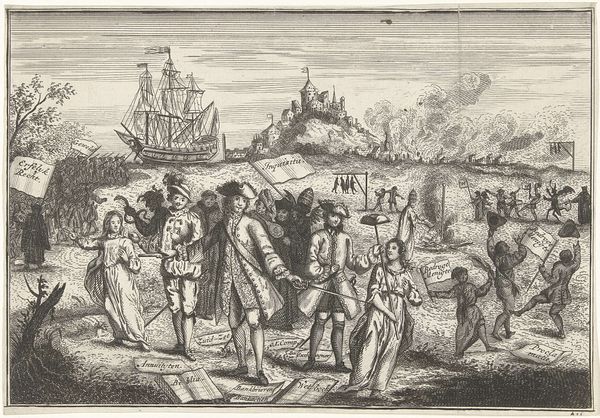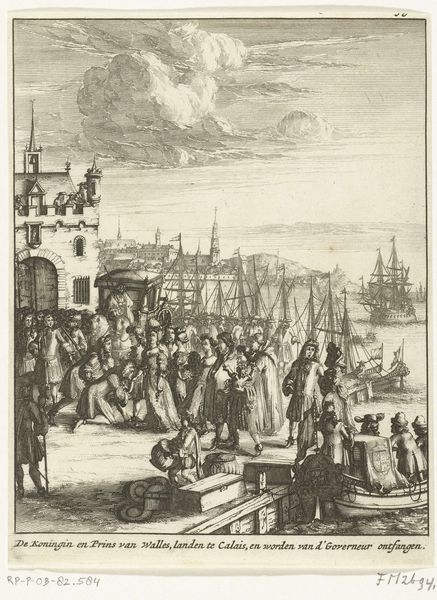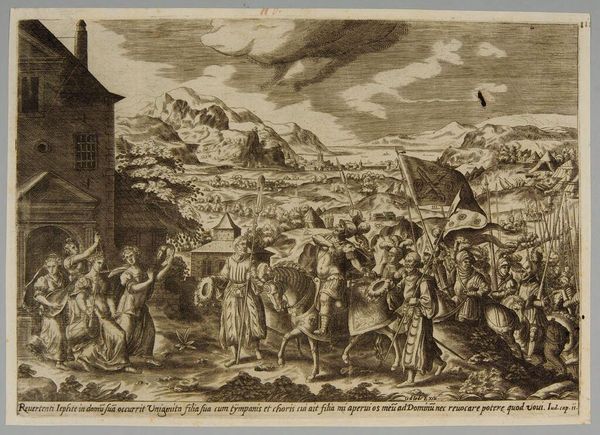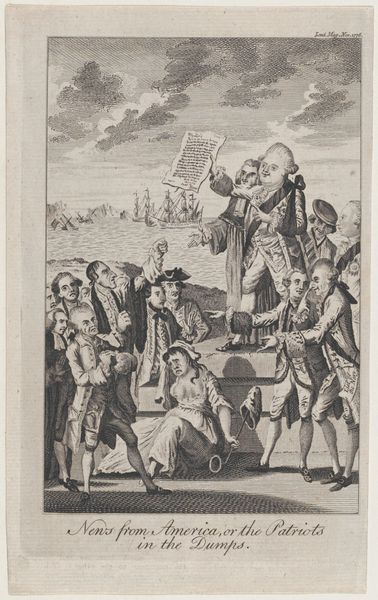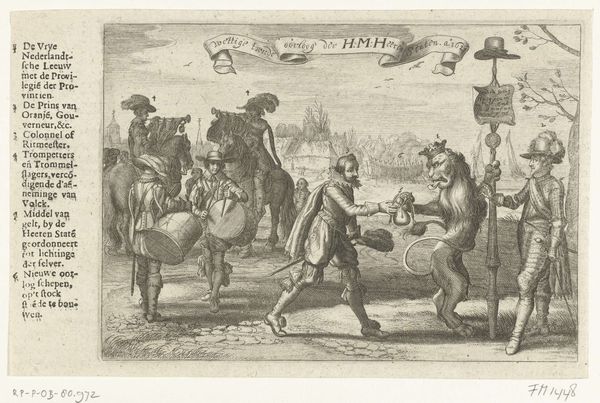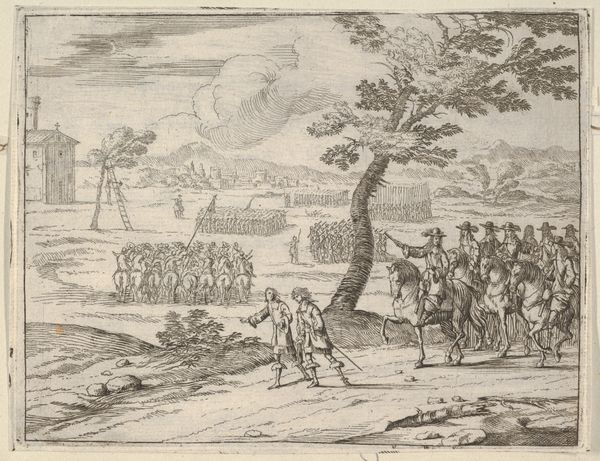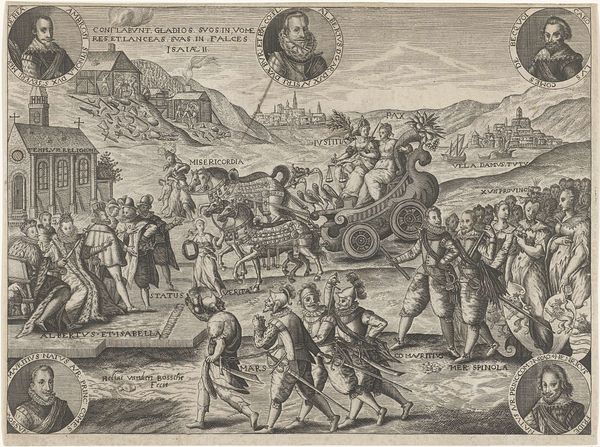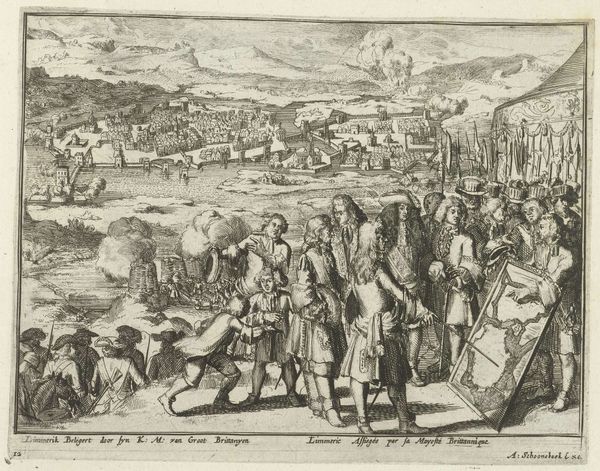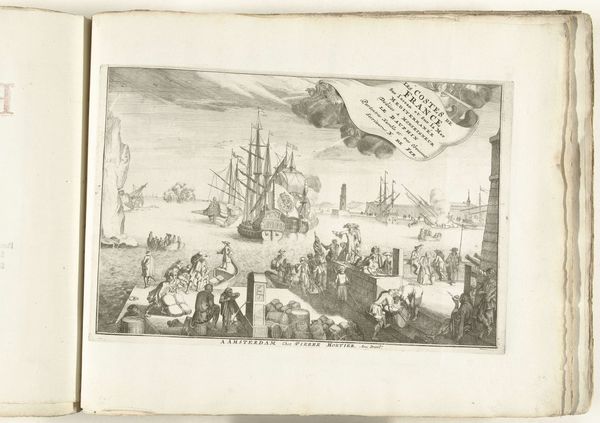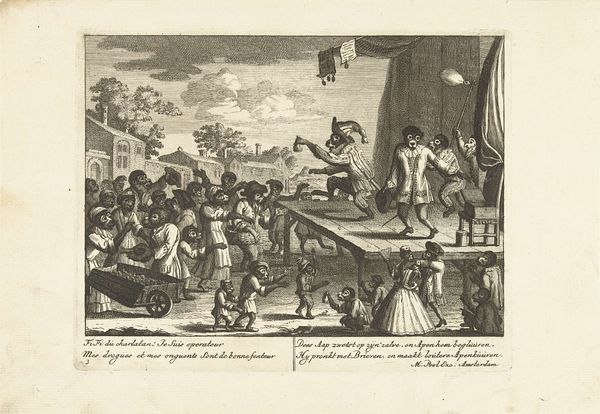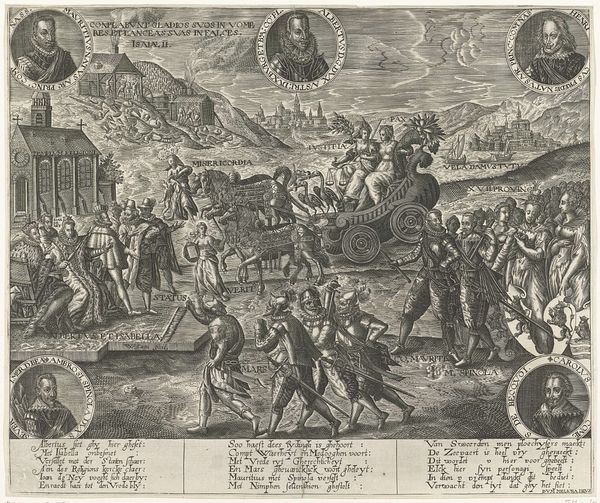
print, engraving
#
baroque
# print
#
caricature
#
caricature
#
genre-painting
#
engraving
Dimensions: height 285 mm, width 387 mm
Copyright: Rijks Museum: Open Domain
Editor: This is "Uitslag van de windnegotie, 1720," made in 1720 by an anonymous artist, and is displayed at the Rijksmuseum. It's an engraving, so it's all lines and shades, creating a very busy, almost frantic scene. I'm intrigued by all the activity. What do you make of this image? Curator: This print reveals much about the means of production in the 18th century, and social hierarchies in Holland. Consider the material itself – an engraving allows for mass production. How might this accessibility shape public opinion and fuel political discourse? The labor invested is substantial, influencing its economic value. Editor: So the act of creating prints contributes to its message? Curator: Exactly. Look at the chaotic scene depicted. Observe the different social classes represented, their clothing, their interactions. This engraving critiques the Dutch investment bubble surrounding wind powered industries. Consider how resources -- wind, capital, and labor -- were being rapidly mobilized and then squandered. Is the artist condemning overspeculation of this technology as much as using that technology to make the artwork itself? Editor: So the print’s making a statement on consumption, right? Showing what's being spent but also asking where does the value really lie? Curator: Precisely. What's being "consumed" are expectations of wind power investments as opposed to raw materials that contribute to sustenance of life. Do you notice how the composition underscores that? Where is the wind and water physically represented? Or is it abstracted into mere numbers in a ledger and printed on pieces of paper? Editor: It's a lot to think about – the material choices reflecting on economic activities, and how an image produced as an object of speculation ends up illustrating speculative investment itself! I never would have considered the connection before. Curator: Indeed, every choice in artmaking reflects on material, labor and, social context. It all contributes to understanding this artwork.
Comments
No comments
Be the first to comment and join the conversation on the ultimate creative platform.
